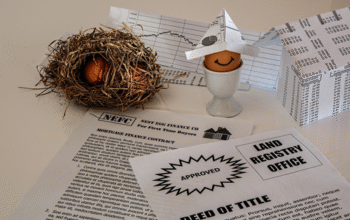Cracking the Code: How Banks Really Decide Your Loan Rates
When you walk into a bank to apply for a loan—whether it’s for a new car, a mortgage, or a small business venture—you probably expect to hear a simple number: your interest rate. But where does that number come from? Why do some people get better rates than others, even with similar incomes? And what really goes on behind the scenes when banks assign you a loan rate?
In this deep dive, we’ll uncover how banks actually determine loan rates—not just the standard factors you’ve heard of, but the lesser-known calculations, industry strategies, and even algorithmic profiling happening quietly in the background.
Welcome to the real story behind loan rates—decoded.
1. The Basics: Interest Rate vs. Loan Rate
First, a quick distinction. While “interest rate” is the commonly used term, “loan rate” includes more than just the interest. It can also include:
- Origination fees
- Service fees
- Risk-based pricing adjustments
- Promotional rates
So when we talk about “loan rates,” we’re really talking about the total pricing of the loan, not just the base interest.
2. The Prime Rate: The Bank’s Starting Point
Every loan rate begins with a baseline—and that baseline is the prime rate.
The prime rate is the interest rate that commercial banks charge their most creditworthy customers. It’s influenced heavily by the Federal Reserve’s federal funds rate, which is set based on economic conditions. When inflation rises, the Fed often increases this rate to cool down spending, which in turn raises loan rates across the board.
Think of the prime rate as the “floor” of your loan. Your personal rate will always be some percentage above that, depending on a variety of factors.
3. Your Credit Score: The Classic Gatekeeper
Yes, credit score matters—a lot.
But what many borrowers don’t realize is that banks don’t just use your credit score to approve or deny a loan. They use it to tier your risk.
- Excellent credit (760+): You’re a low-risk borrower. Expect the lowest rates.
- Good credit (700–759): Still solid, but might get slightly higher rates.
- Fair credit (640–699): Higher rates, more fees, and more scrutiny.
- Poor credit (below 640): You may get denied—or only qualify for subprime loans with very high interest.
But here’s the secret: even within each credit band, there are micro-adjustments. Banks use internal scoring models that weigh your credit history, income stability, debt levels, and recent credit inquiries.
4. Debt-to-Income Ratio (DTI): The Silent Killer
A good credit score alone isn’t enough. Your debt-to-income ratio is one of the most influential—but least understood—factors in rate calculation.
The formula is simple:
DTI = (Monthly debt payments ÷ Gross monthly income) x 100
Banks use this to determine your capacity to take on more debt. A high DTI means you’re already stretched thin, so they’ll either raise your rate or reject your application.
In fact, many lenders have DTI cutoffs:
- Under 36%: Preferred borrowers
- 37%–43%: Acceptable range
- Above 43%: Risk zone
What many don’t realize is that some banks will offer a slightly lower rate to borrowers with low DTI ratios, even if their credit score is lower than another applicant.
5. Loan Type & Term: Strategic Rate Design
Banks price loans based on the type and length of the loan. For example:
- Mortgages: Often have lower rates due to collateral (your house).
- Auto loans: Moderate rates, but vary by make/model.
- Personal loans: Higher rates due to being unsecured.
- Business loans: Highly variable depending on plan and assets.
Longer terms often come with higher rates, since the bank assumes more risk over time.
But here’s the catch: shorter loans can have higher monthly payments, which may not be feasible for everyone—so banks can sometimes charge a premium for short-term convenience too.
6. Internal Bank Algorithms: The New Rate Deciders
Gone are the days of manual loan reviews. Today, banks use predictive modeling and AI to assign loan rates.
These proprietary algorithms analyze dozens—even hundreds—of variables, including:
- Time at current job
- Length of residence
- Recent financial behavior (not just balances, but spending trends)
- Loan purpose (a wedding vs. debt consolidation could result in different rates)
- Behavioral data from online applications (e.g., how long you hover over terms and conditions)
Some banks even integrate alternative data like utility bills, rent history, and even social media activity for non-traditional borrowers.
7. Economic Risk & Bank Strategy: The Invisible Hand
Loan rates aren’t just about you—they’re about the bank’s outlook on the economy.
For instance, in uncertain economic times, banks become more conservative. They raise rates slightly across all borrowers to hedge risk.
Conversely, in a highly competitive lending environment, some banks lower rates to attract more borrowers, even if they’re not ideal customers. This is often seen in:
- Seasonal promotions
- First-time homebuyer programs
- Bank-funded lending campaigns (especially at end of quarters)
In short, your rate could change simply because the bank needs to hit a quota.
8. Geography & Local Risk Factors
Believe it or not, where you live can affect your rate.
Banks consider regional economic health, property values, and even natural disaster risk when pricing loans.
- In flood-prone or wildfire-prone areas, homeowners may pay slightly higher mortgage rates.
- In areas with high unemployment, lenders may price loans higher across the board.
This is especially true for community banks and credit unions, which focus more locally than national lenders.
9. Loan Bundling & Relationship Discounts
Ever seen a bank offer a “preferred customer” rate? That’s not just marketing—it’s part of a strategy called relationship pricing.
If you:
- Have direct deposit with the bank
- Hold a credit card or investment account with them
- Use their app regularly
…you might be eligible for discounted loan rates. Why? Because you’re a known quantity. Banks love sticky customers—they’re less likely to default.
Some banks offer 0.25% to 0.50% discounts for bundling.
10. Negotiation Is Still Possible
Here’s a truth most lenders won’t advertise: loan rates are sometimes negotiable.
Especially if you:
- Have competing offers from other banks
- Can show income or asset growth since your application
- Are an existing high-value customer
You can often request a “rate match” or “underwriting review.” Some banks have retention teams who can approve better terms if you’re about to walk away.
Pro tip: always get pre-approvals from multiple lenders—then use the lowest one to negotiate.
Final Thoughts: Unlocking the Lending Matrix
Understanding how banks determine loan rates is about peeling back the layers of what seems like a cold, numbers-driven system. In reality, it’s a mix of hard data, risk profiling, economic signals, and yes—some strategic manipulation.
To summarize, banks set your loan rate based on:
- The prime rate and market conditions
- Your credit score and credit behavior
- Your income and debt ratios
- Loan type, term, and amount
- Internal algorithms and behavioral models
- Regional and economic factors
- Customer loyalty and negotiation leverage
So next time you’re quoted a rate, don’t just accept it blindly. Ask questions. Shop around. Present yourself as a low-risk, high-value customer.
Because cracking the code of loan rates isn’t just about knowledge—it’s about strategy.
Want to go deeper? In a follow-up post, we’ll share real borrower scenarios and show how slight changes in your credit profile or loan purpose can shift your loan rate by thousands over time.



